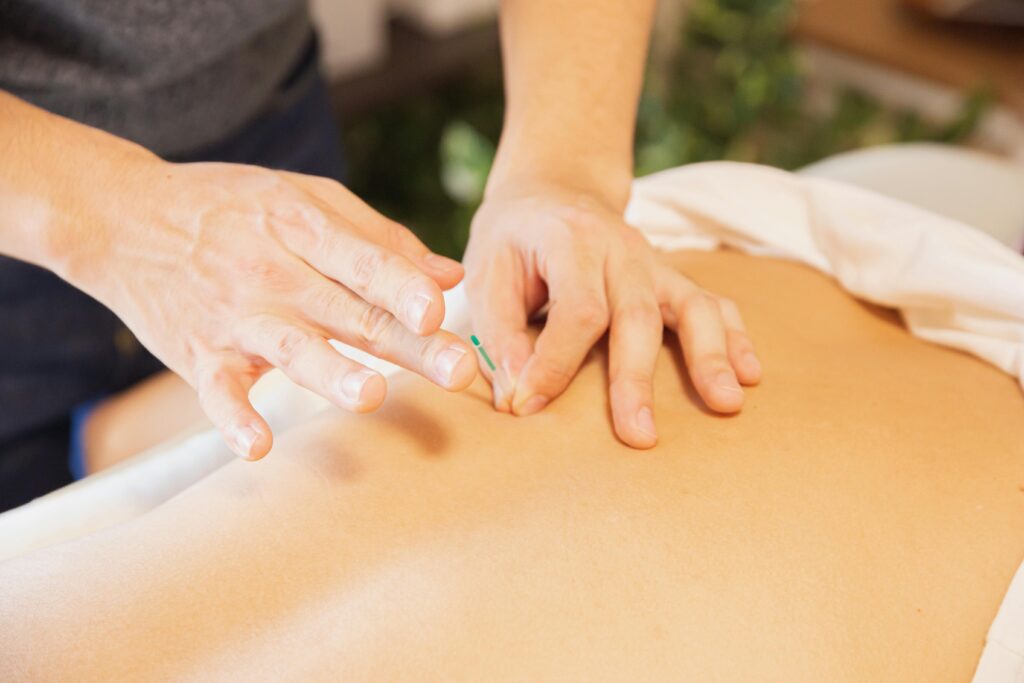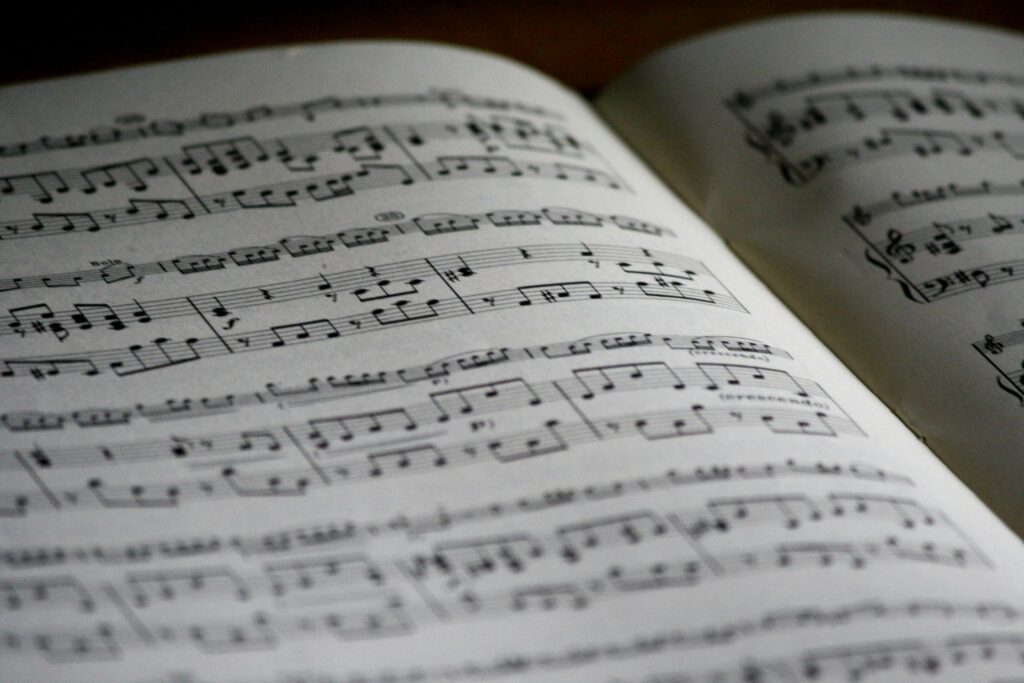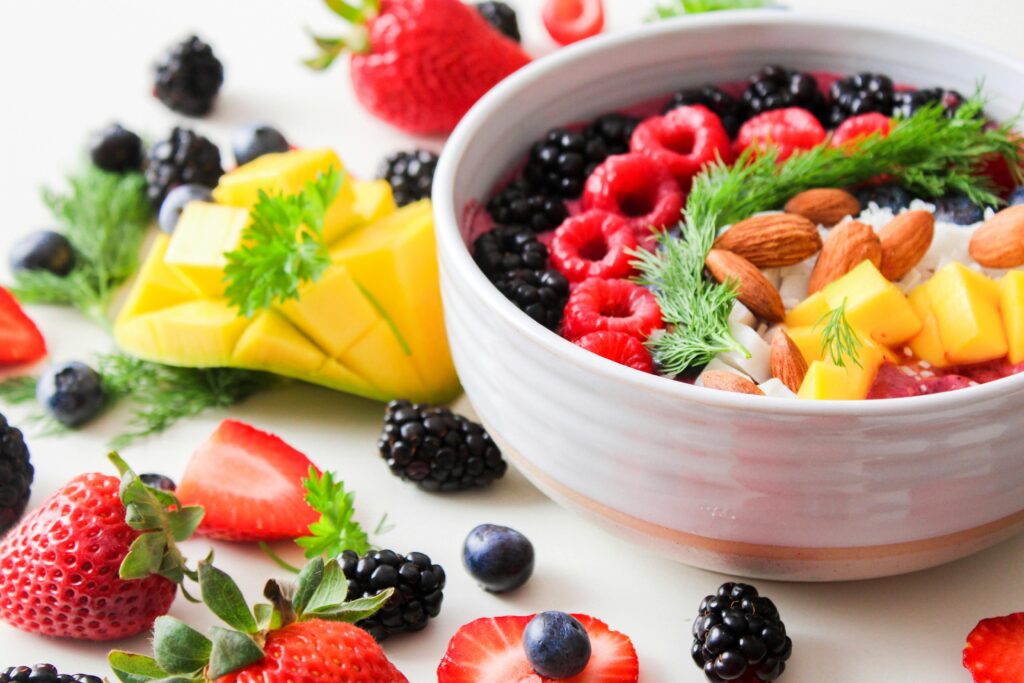Anxiety affects millions of people and can significantly disrupt daily life, affecting thoughts, emotions and physical well-being.
The symptoms of anxiety can be physical, emotional or behavioural. They may include:
- a racing heart
- shortness of breath
- sweating
- muscle tension
- restlessness
- digestive issues
- persistent worries or fears
- ruminating on things from the past
- difficulty concentrating
- irritability
- sleep disturbances
- avoidance behaviour
The good news is that there are many different approaches that can be taken to help with anxiety. Everyone responds differently so you might need to try different approaches to see what works best for you.
It is often easier and quicker to use the body to calm the mind, rather than trying to change your thinking. The parasympathetic nervous system is responsible for the body’s relaxation response. Many of the following practices activate the vagus nerve, one of the longest and most complex nerves in the body, which is involved in parasympathetic regulation of activities such as digestion, heart rate and respiration. This is why anxiety reducing practices not only leave you feeling calm and relaxed, you might also feel your heart and breathing rate become comfortably slower and an improvement in any digestive issues.
This guide is not a replacement for medical advice. If you have severe anxiety that is significantly impacting your life, please seek medical advice. With the exception of herbs, many of these approaches can be used alongside anti-anxiety medication if required.
You can read through all the different approaches or you can click on the direct links provided below if there is a particular approach that you are interested in.
Emotional Freedom Technique/Tapping
Cognitive Behavioural Therapy (CBT)
Acupuncture

Studies and scans suggest that acupuncture can help anxiety by:
- Triggering the body to release chemical messengers and hormones that are important for pain relief and relaxation
- Influencing the part of the nervous system in charge of functions like slowing your heart rate and breathing so that you feel more relaxed.
- Influencing parts of the brain that are important for regulating your mood.
If you are interested, more details about how acupuncture affects the body are provided below.
Acupuncture may influence the release and regulation of neurotransmitters (chemical messengers) in the brain, such as serotonin, dopamine and endorphins, which play a role in mood regulation, pain perception and overall well-being.
Acupuncture may also influence the autonomic nervous system, which controls involuntary body functions such as heart rate, digestion and respiratory rate. By balancing sympathetic and parasympathetic activity, acupuncture may contribute to overall relaxation and stress reduction and improve gastrointestinal and cardiovascular function (1).
Acupuncture can safely be used alongside anxiety medication such as selective serotonin reuptake inhibitors (SSRIs) and may significantly improve anxiety compared with using SSRIs alone (2).
Functional magnetic resonance imaging (fMRI) studies have demonstrated that acupuncture can lead to changes in brain activity. Specific brain regions involved in emotions, such as the amygdala and hippocampus, may be activated or modulated during acupuncture sessions, suggesting a neurobiological basis for its therapeutic effects (3).
Breathing exercises

Breathing exercises, such as the physiological sigh, can help reduce symptoms of anxiety. A study from Stanford Medicine demonstrated physiological/cyclic sighing for just 5 minutes a day could improve mood and lessen anxiety by activating the body’s parasympathetic response (4).
Physiological/Cyclic sighing
- Breathe in through your nose until you have filled your lungs.
- Do not breathe out. Instead, take a second deeper inhale through your nose so your lungs expand even more fully.
- Very slowly exhale through your mouth
3-4-5 breathing
- Inhale for 3 seconds
- Hold breath for 4 seconds
- Exhale for 5 seconds
Just doing these breathing exercises for 5-10 minutes a day can help lessen anxiety.
Mindfulness and meditation
Mindfulness is the practice of being fully present and engaged in the moment with an open and non-judgmental attitude. It involves consciously bringing attention to your thoughts, feelings and sensations in your body and the surrounding environment.
- Awareness – pay attention to what is happening in the present moment i.e. fully engage in the activity you are doing. This could be something as simple as brushing your teeth, eating a meal or going out for a walk
- Acceptance – let thoughts and feelings come and go without labeling them
- Intentionality – direct attention to the present for example through breathing, observing or grounding exercises
Mindfulness may help reduce stress and anxiety and improve focus and concentration.
Examples include mindful breathing practices such as those described above, mindful meditation and mindful movement such as yoga, Tai Chi or Qigong.
Meditation is a practice that may use and improve mindfulness. There are many different meditations of different durations on YouTube. Headspace also has free and paid resources Headspace Articles, Tips, and Guides | Headspace
Yoga Nidra
Yoga Nidra is a restorative practice often referred to as “yogic sleep.” It can help calm the nervous system, reduce stress and promote healing. It usually begins with systematic relaxation of each part of the body followed by visualisations, breathing exercises or intentions.
Ten Minute Yoga Nidra | Reset Your Nervous System (youtube.com)
Progressive muscle relaxation

Progressive muscle relaxation is a relaxation technique that involves tensing and then completely relaxing different muscle groups in the body, usually starting from the feet and progressing upward. The aim is to reduce muscle tension and promote a state of deep relaxation.
I’ve included a link to a short practice but there are many different options if you search on Google or YouTube.
Progressive Muscle Relaxation – A 5 minute Guided Mindfulness Meditation (youtube.com)
Emotional Freedom Technique/tapping
EFT combines elements of traditional Chinese medicine (acupressure) with modern psychology. The technique involves tapping on specific meridian points while focusing on a distressing emotion or anxiety-provoking thought. This can help reduce the intensity of anxiety and promotes relaxation by activating the parasympathetic response.
Although there are paid Apps you can purchase such as the Tapping Solution, you can also find free videos on YouTube such as The Tapping Solution and Tap with Brad.
Release Stress, Anxiety & Overwhelm – Tapping Meditation (youtube.com)
A Simple Way to Help Process Anxiety – Tapping with Brad Yates (youtube.com)
Yoga, Qigong and Tai Chi

Yoga combines physical postures, breath control, meditation and relaxation techniques, creating a holistic practice that can positively impact both the body and mind.
Regular yoga is thought to improve mood and reduce anxiety by increasing the levels of the relaxation neurotransmitter, gamma aminobutyric acid (GABA), in the brain and reducing the stress-hormone cortisol (5).
There are different styles of yoga and classes are available in person or online. If you’re a beginner, make sure you choose a class at your level as some poses can be a bit more challenging at the beginning.
For those who wish to practice from home and/or on a budget, there are many different videos on YouTube to follow. A lovely one to get you started is with Adriene (130) Yoga For Anxiety and Stress – YouTube
The traditional Chinese practices of Qigong and Tai Chi also involve the coordination of movement, breath and meditation.
The associated health benefits include stress reduction, improving flexibility, boosting immune system and enhancing overall wellbeing.
Cold Therapy

Cold therapy involves the use of cold temperatures for therapeutic purposes. Common forms include cold showers, ice baths and outdoor swimming.
It has been linked to benefits such as reduced anxiety, depression and inflammation as well as improving immunity.
It is important to note that while some people might find cold therapy helpful for managing anxiety, it might not be suitable for everyone. Individuals with certain medical conditions, such as heart disease, asthma or Raynaud’s syndrome, should approach cold therapy with caution and consult with a health professional before trying it.
It is always advisable to start gradually and pay attention to how your body responds. For more information about cold therapy, how to do it and if it is safe for you, see the link below.
Is cold water therapy good for you? (bupa.co.uk)
Nature and Fractals

Spending time in nature can greatly benefit your physical and mental wellbeing. This could be activities such as going for a walk, hike, gardening, volunteering or looking after animals.
Natural fractals are self-repeating patterns such as those in leaves, flowers, clouds, trees and water. A study by the University of Oregan found that natures’ fractals may reduce stress by up to 60% (6) .
Gardening

The combination of physical activity, sensory stimulation, and connection to nature during gardening can create a therapeutic experience that eases stress and promotes a sense of well-being.
1. Spending time in green spaces has been shown to reduce cortisol levels (the body’s stress hormone), which in turn can decrease feelings of anxiety. Being in nature or even viewing natural elements has a calming effect, promoting relaxation and mindfulness.
2. Digging, planting and weeding can be a good workout releasing endorphins which improve mood and reduce stress levels.
3. Gardening encourages a state of mindfulness by engaging all five senses. The repetitive nature of certain gardening tasks, like weeding or watering, allows for focused attention on the present moment, reducing the mind’s tendency to worry about future events or ruminate on the past.
4. The act of planting and nurturing plants until they flourish provides a sense of accomplishment.
5. Growing and tending to plants offers a distraction from negative thoughts and an opportunity to engage in an activity with positive outcomes.
6. Gardening in community gardens or group settings, fosters social interaction. This helps reduce feelings of loneliness and isolation, which are often associated with anxiety and depression.
7. Exposure to natural light while gardening can help regulate circadian rhythms, promoting better sleep and an associated reduction in anxiety levels.
Forest bathing (Shinrin-yoku)

Originating in Japan, forest bathing (or Shinrin-yoku) has become popular due to its associated health benefits. Fortunately, you are not expected to wear a swimsuit for this type of bathing. A simple walk in a wood or forest with your normal clothes on is sufficient.
The concept revolves around slowing down and engaging with the natural environment using all the senses, breathing in the fresh air, listening to the sounds of nature, touching the trees and plants and observing the surroundings mindfully.
Health benefits may include reduced stress, lowered blood pressure, improved mood, creativity and concentration. As trees release chemicals called phytoncides which increase the number and activity of natural killer cells in the human body, forest bathing may also enhance immune function (7).
Listening to music

Listening to music may reduce anxiety by influencing mood-regulating neurotransmitters (8). Generally, slower tempo music can help reduce heart and breathing rates, inducing a state of relaxation.
Individual preferences play a crucial role in music’s effectiveness. What is soothing for one person may be irritating to another. Finding the right genre or piece can greatly enhance its therapeutic benefits.
Binaural beats are claimed to have various effects on the brain such as relaxation, enhanced focus and stress reduction. These beats are an auditory illusion perceived when two slightly different frequencies are presented separately to each ear through headphones. The brain perceives a third tone which is the difference between the two frequencies.
For more information about the potential uses for binaural beats see Binaural Beats | Psychology Today United Kingdom
Circadian Rhythm

Lack of sleep may worsen anxiety symptoms. If possible, try to go to bed and wake up at the same time each day.
Preparing your body for sleep begins as soon as you wake up in the morning. It is important that you get exposure to bright light as soon as possible after waking to set your circadian rhythm.
In countries where winter mornings are dark, some people may benefit from using a SAD (seasonal affective disorder) lamp in the morning to get some morning light exposure.
During the day, exposure to daylight, fresh air and exercise (this can just be gentle exercise such as walking) will all help towards a better night’s sleep.
Try to avoid or reduce exposure to blue light from TV screens and other devices in the evening as this may affect sleep quality. Some people are more sensitive than others and blue light blocking glasses may help.
Make sure your bedroom temperature does not get too warm. A dark bedroom is best but if you need a light source, choose a dim red light which is less likely to inhibit the release of melatonin, an important hormone in the sleep-wake cycle. If you find your mind racing, relaxation techniques such as meditation may help calm the body before bed.
Grounding bed sheets and weighted blankets may help some people sleep although more research is needed in this area.
Exercise

Exercise stimulates the release of your mood elevating endorphins and can help reduce levels of the stress hormone cortisol.
Engaging in exercise can also provide a distraction from anxious thoughts and worries as well as improving sleep.
Activities that combine physical activity with mindfulness and breath control, like yoga, tai chi and qi gong can enhance the mind-body connection.
You don’t have to do a high intensity exercise workout to feel the benefit. Do something you enjoy and fits in with your lifestyle. That could be going to the gym, weightlifting, yoga, a fun exercise class or just walking more often.
Diet

“Let food be thy medicine and let medicine be thy food.” This famous quote attributed to Hippocrates emphasises the impact of nutrition on our health. Eating a balanced diet rich in nutrients can be a powerful way to support our overall wellbeing and help prevent certain illnesses.
The gut-brain axis is a communication system between your digestive system and brain. The key parts include the enteric nervous system in your gut, the vagus nerve connecting the gut and the brain, and the microorganisms in your gut known as the microbiota. This communication can influence mood, digestion and overall health.
In simple terms, a poor diet could contribute to anxiety and depression as well as many other conditions.
There are many different diets that work well for different people. In general, healthy habits include gradually increasing your consumption of vegetables, fermented foods such as kefir and fibre-rich foods such as beans and wholegrains. Avoid eating over-processed food such as sweetened breakfast cereals, soft drinks and processed meat (e.g. hotdogs) as these may affect anxiety levels as well as being associated with other health conditions (9).
People with digestive issues may struggle with certain food groups and may benefit from working with a nutritionist to follow a certain diet e.g. low FODMAP diet.
Reducing Caffeine

Although the caffeine in tea (including green tea), coffee and energy drinks has energising effects, it can exacerbate anxiety symptoms. Consumption can increase heart rate and blood pressure and stimulate release of certain neurotransmitters which increase alertness. Some people are just more sensitive to caffeine and become more jittery, restless or anxious after consumption.
The elimination half-life (time taken for concentration to reduce to half its starting dose) of caffeine can vary between 1.5 and 9.5 hours (10). For example, if you drink a caffeinated drink at 1pm, half the amount of caffeine could still be present in the body at 10pm depending on your body’s ability to metabolise it. Limiting caffeine consumption to before midday could be worth trying if you struggle to sleep.
Even if you fall asleep with no problem, caffeine can also affect the deep, restorative phases of sleep (11) and poor quality sleep can increase anxiety further.
Herbs

Several herbs have been traditionally used to help alleviate symptoms of anxiety.
Smelling herbs such as lavender or rosemary may aid relaxation.
Ingested herbs that might help anxiety include Lavender, Chamomile, Valerian, Passionflower and Ashwagandha.
Ingested herbs can have a powerful action and like anything that you consume, the effects can vary greatly between individuals. Anyone can react to something they have not taken before. Always research the dose, how to take it, possible interactions with other medications and contraindications.
Creative Art (e.g. painting or dancing)

Some people find art helpful in managing anxiety. It may allow individuals to express their emotions, thoughts and experiences in a non-verbal way. Immersion in the creative process can also serve as a healthy distraction from anxious thoughts and worries.
Cognitive behavioural therapy (CBT)
CBT is a talk therapy that operates on the premise that our thoughts, feelings and behaviour are interconnected. It aims to identify and modify negative thought patterns and behaviours aiming for a more balanced perspective.
Techniques used in CBT may include:
- Journalling
- Thought records
- Relaxation and mindfulness
- Practicing new behaviours or responses to challenging situations
CBT with a therapist can be helpful but if you wish to try some self-help techniques by yourself please refer to this link Online self-help CBT techniques – Every Mind Matters – NHS (www.nhs.uk)
Limit time on social media

Social media often presents a curated version of people’s lives, highlighting the positives while omitting the negatives. Constant exposure to these idealised images and lifestyles can lead to feelings of inadequacy and comparison, which may exacerbate anxiety.
Social media platforms are designed to keep users engaged through features such as notifications and live updates. This can create a fear of missing out (FOMO) or feeling disconnected.
The constant stream of information on social media can be overwhelming especially when it includes news about distressing or contentious topics. This can increase feelings of anxiety and make it difficult to disconnect.
Social media platforms often encourage users to seek validation through likes, comments, and shares. Relying on external validation for self-worth can lead to anxiety and self esteem issues as individuals may become dependent on the feedback of others for their sense of value.
If you are using social media, try and curate your feed to include content that inspires and uplifts you.
Limit news exposure
Excessive news consumption can increase feelings of anxiety and worry. Many news stories contain negative content about subjects which you have no control over. This type of news can trigger your body to release stress hormones and may result in psychological and physical effects such as depression, anxiety, insomnia and disturbing dreams, even if you’re not aware of it at the time.
Try to limit your news consumption if you think it may adversely affect you. If you’d like to consume more positive news about what is going right in the world, see Positive News | Good journalism about good things – Positive News
This guide is not exhaustive and there are other ways you might find helpful in reducing your anxiety alongside acupuncture. Everyone is individual so work on finding out what works best for you.
Never avoid seeking medical help if you have severe anxiety (or another condition) or if your condition continues to worsen.
References/Works Cited
- Yan-qiu, L., Yao Jun-peng, Xiang-yun, Y., Wen, W., Zhang Yu-peng, Lu, Y., Hou Yu-jun and Ying, L. (2023). Advances in acupuncture regulation on the autonomic nervous system from 2013 to 2022: A bibliometric analysis via citespace. Complementary Therapies in Medicine, [online] 80, pp.103009–103009. doi:https://doi.org/10.1016/j.ctim.2023.103009.
- Sabbagh Gol, A., Rezaei Ardani, A., Farahmand, S.K., Dadgarmoghaddam, M., Ghorani, V., Rezaei, S. and Khorsand, A. (2021). Additive effects of acupuncture in alleviating anxiety: A double-blind, three-arm, randomized clinical trial. Complementary Therapies in Clinical Practice, 45, p.101466. doi:https://doi.org/10.1016/j.ctcp.2021.101466.
- Huang, W., Pach, D., Napadow, V., Park, K., Long, X., Neumann, J., Maeda, Y., Nierhaus, T., Liang, F. and Witt, C.M. (2012). Characterizing Acupuncture Stimuli Using Brain Imaging with fMRI – A Systematic Review and Meta-Analysis of the Literature. PLoS ONE, 7(4), p.e32960. doi:https://doi.org/10.1371/journal.pone.0032960.
- Balban, M.Y., Neri, E., Kogon, M.M., Weed, L., Nouriani, B., Jo, B., Holl, G., Zeitzer, J.M., Spiegel, D. and Huberman, A.D. (2023). Brief structured respiration practices enhance mood and reduce physiological arousal. Cell Reports Medicine, [online] 4(1). Available at: https://www.cell.com/cell-reports-medicine/fulltext/S2666-3791(22)00474-8?_returnURL=https%3A%2F%2Flinkinghub.elsevier.com%2Fretrieve%2Fpii%2FS2666379122004748%3Fshowall%3Dtrue.
- R, P., Kumar, A.P., Dhamodhini K S, Venugopal, V., Silambanan, S., K, M. and Shah, P. (2023). Role of yoga in stress management and implications in major depression disorder. Journal of Ayurveda and Integrative Medicine, [online] 14(5), p.100767. doi:https://doi.org/10.1016/j.jaim.2023.100767.
- Uoregon.edu. (2022). The human brain would rather look at nature than city streets | Oregon News. [online] Available at: https://news.uoregon.edu/content/human-brain-would-rather-look-nature-city-streets?utm_source=UOnews [Accessed 15 Oct. 2024].
- Hansen, M.M., Jones, R. and Tocchini, K. (2017). Shinrin-Yoku (forest bathing) and nature therapy: A state-of-the-art review. International Journal of Environmental Research and Public Health, [online] 14(8), p.851. doi:https://doi.org/10.3390/ijerph14080851.
- Ooishi, Y., Mukai, H., Watanabe, K., Kawato, S. and Kashino, M. (2017). Increase in salivary oxytocin and decrease in salivary cortisol after listening to relaxing slow-tempo and exciting fast-tempo music. PLoS ONE, [online] 12(12). doi:https://doi.org/10.1371/journal.pone.0189075.
- BMJ Group – Helping doctors make better decisions. (2019). New evidence links ultra-processed foods with a range of health risks – BMJ Group. [online] Available at: https://bmjgroup.com/new-evidence-links-ultra-processed-foods-with-a-range-of-health-risks/ [Accessed 15 Oct. 2024].
- Institute of Medicine (US) Committee on Military Nutrition Research (2001). Caffeine for the Sustainment of Mental Task Performance: Formulations for Military Operations. [online] PubMed. Washington (DC): National Academies Press (US). Available at: https://pubmed.ncbi.nlm.nih.gov/25057583/.
- Drake, C., Roehrs, T., Shambroom, J. and Roth, T. (2013). Caffeine Effects on Sleep Taken 0, 3, or 6 Hours before Going to Bed. Journal of Clinical Sleep Medicine, [online] 09(11). doi:https://doi.org/10.5664/jcsm.3170.